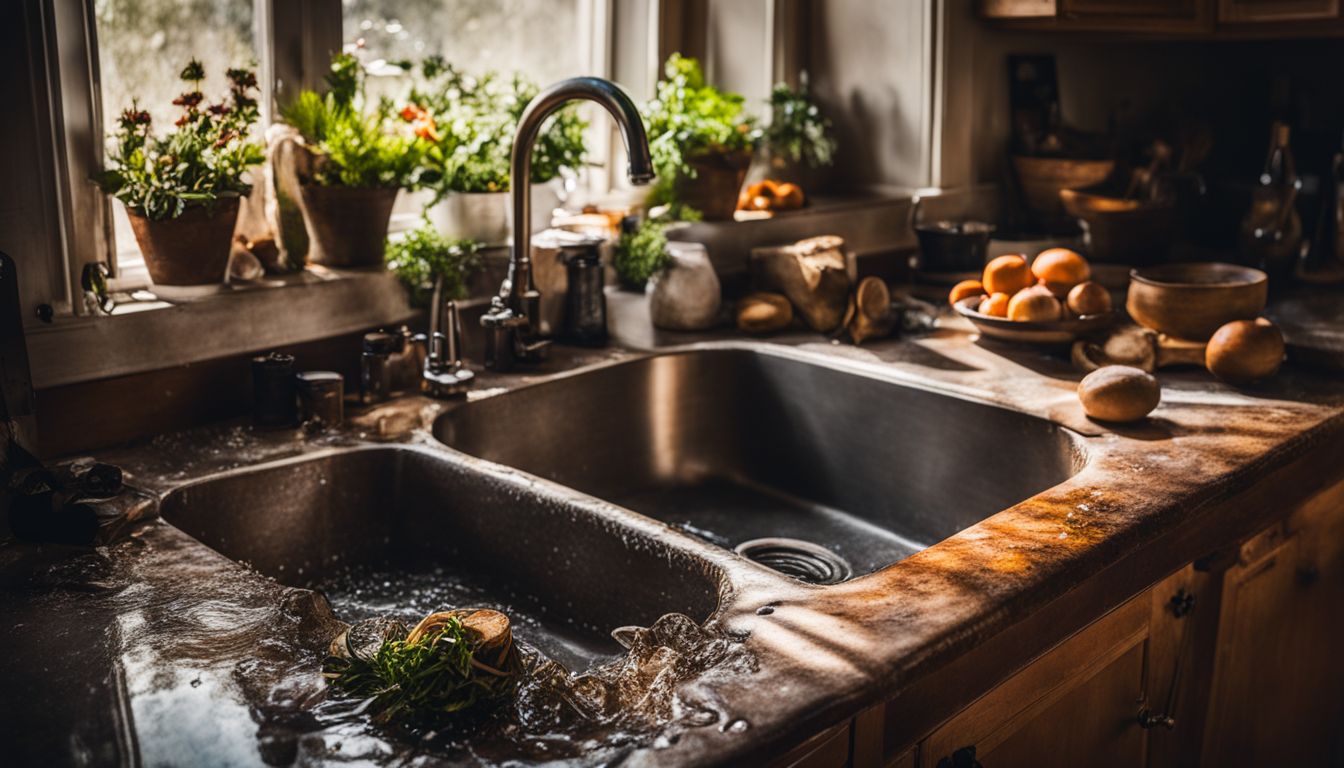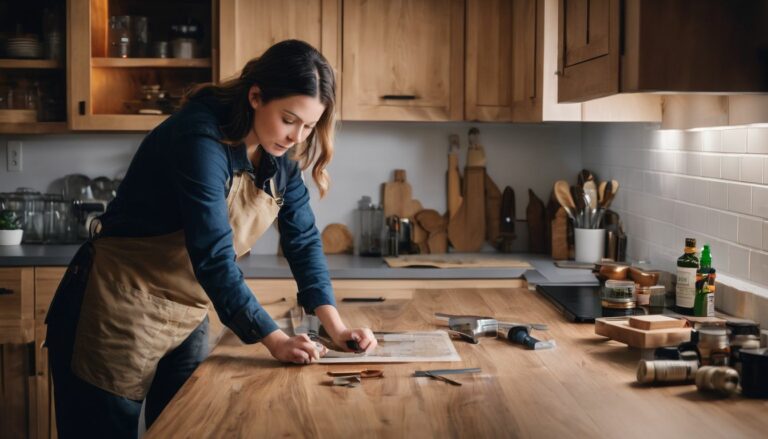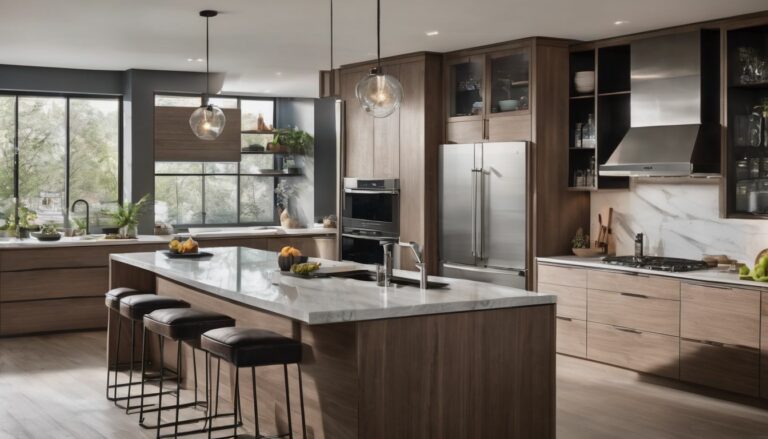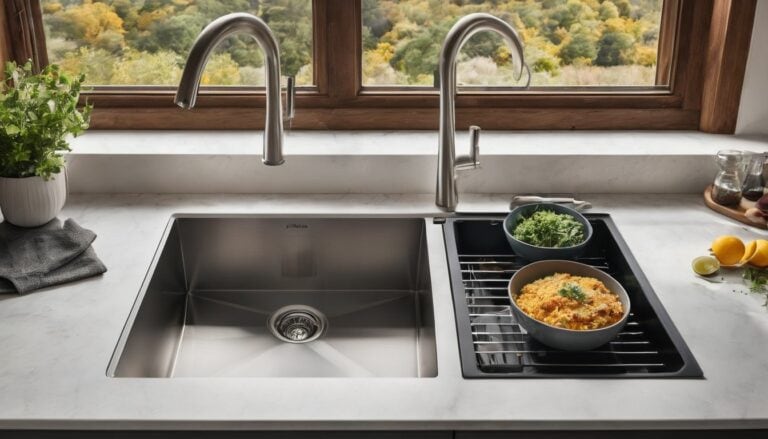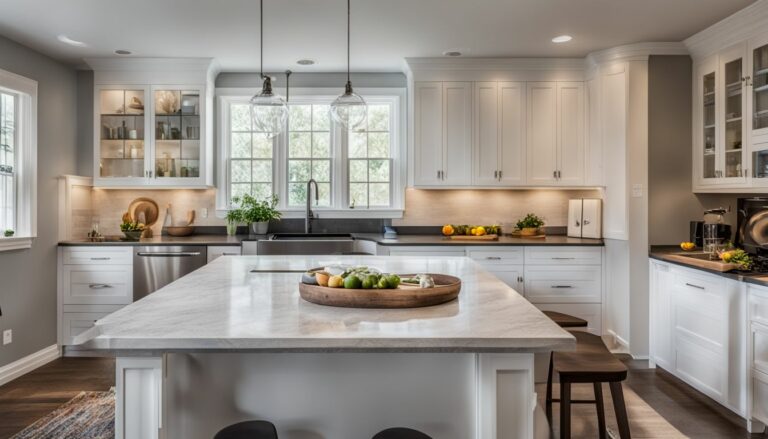Can You Use Drano in Your Kitchen Sink? Safe Practices for Unclogging
Ever found yourself in an epic face-off with a stubbornly clogged kitchen sink, contemplating whether it’s time to call in the cavalry (we mean Drano)? Don’t worry; I’ve been right there alongside you! In the spirit of camaraderie, I rolled up my sleeves and plunged headfirst into understanding more about using this notorious product.
This article isn’t just your average guideline — it’s a deep dive into all things Drano-for-kitchen-sinks-related. We’ll navigate together through its potential pitfalls, perks, suitable scenarios and necessary alternatives.
Ready for us to unclog this puzzle? Let’s get our hands dirty!
Key Takeaways
- Drano can harm your pipes and health, as it contains strong chemicals that can eat away at toilet bowls, PVC pipes, and pipe glues.
- Safer alternatives to using Drano include using baking soda and vinegar, soap and hot water, salt, or a plunger to unclog your kitchen sink.
- If you decide to use Drano in a kitchen sink with a garbage disposal, make sure to choose the right product that is safe for use with disposals.
Understanding Kitchen Sink Clogs
Kitchen sinks can get clogged due to various reasons. Food pieces, grease, or other things that we wash down the sink can block the pipes. Over time, these blocks turn into big clogs.
A big clog stops water flow and makes it hard for you to use your sink.
The problem with these clogs is that they damage pipes over time. Small problems grow into bigger ones if not attended soon enough. Clogs also put a lot of pressure on pipes which may crack them or make them weak.
Too much force caused by heavy clogs might even break old corroded pipes or soften PVC ones.
can you use drano kitchen sink: The Risks of Using Drano
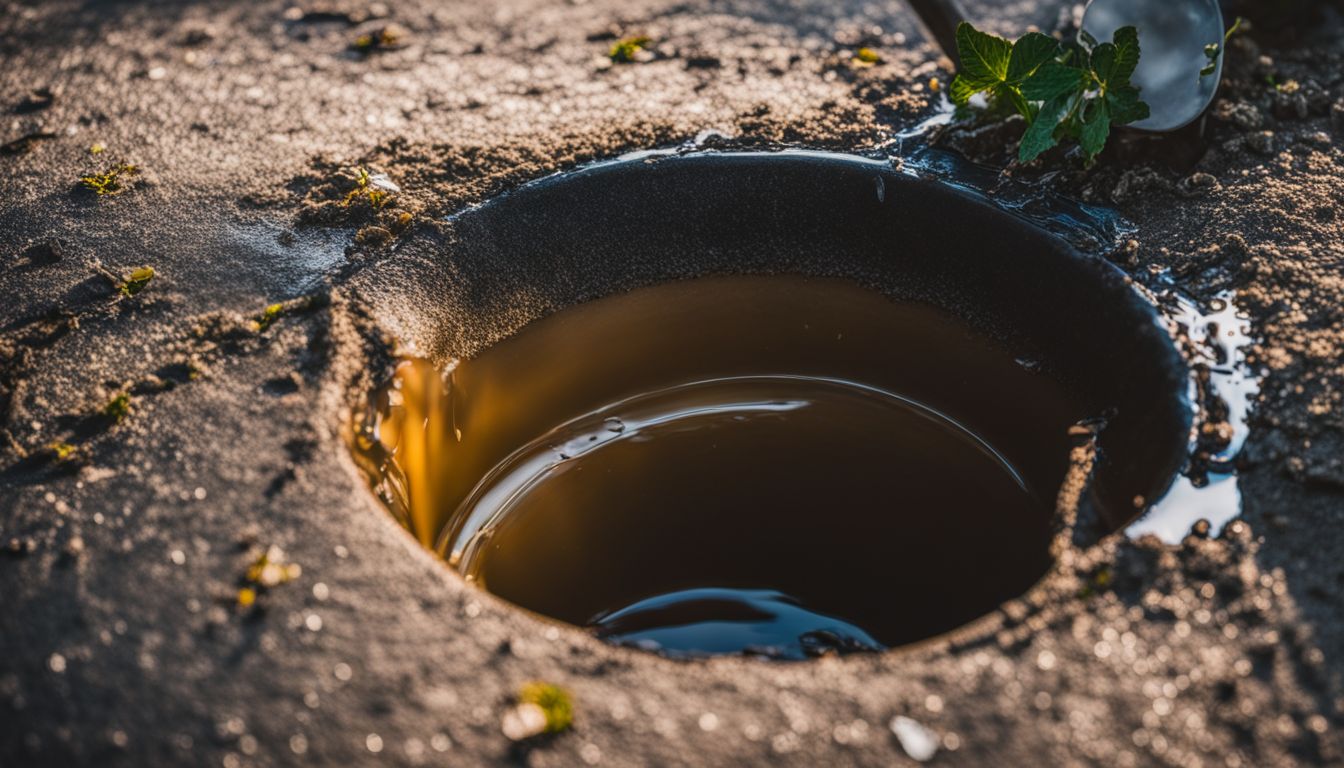
Drano can harm your pipes and health. It’s mighty strong, so it eats away at toilet bowls, PVC pipes, and glues that keep the pipes together. Your sink might seem fixed for a short while but the clogs could come back.
Big plumbing problems may hide under these quick fixes too. I’ve seen this many times with my own eyes! Not to mention, Drano is a chemical drain cleaner which can be unsafe. Just think of all those wrong things that could happen if you use it! For example, someone could get hurt or become sick from its fumes or harsh ingredients.
So instead of Drano, safer solutions are available to unclog toilets and sinks.
Alternatives to Using Drano
You don’t have to use Drano. You can fix a clog with other things you have at home. One way is using baking soda and white vinegar. They’re safe for old pipes and the earth.
Another way is using soap and hot water, salt or a plunger. These are good ways to clean your sink too! Some people like these ways better than Drano. But if they won’t work for you, there are nine more options out there that might do the trick!
How to Unclog a Kitchen Sink in 3 Steps
I will tell you how to unclog a kitchen sink in just three simple steps. Here is what you need to do:
- Pour boiling water down the drain: Boiling water can help dislodge clogs caused by grease or soap scum. Carefully pour a pot of boiling water down the drain, and let it work its magic for a few minutes.
- Use a plunger: If the boiling water doesn’t do the trick, grab a plunger. Place it over the drain, making sure there’s enough water to cover the rubber part. Press down firmly and then pull up quickly to create suction. Repeat this process several times until the clog is cleared.
- Try baking soda and vinegar: If the plunger doesn’t work, you can try using a mixture of baking soda and vinegar. First, pour half a cup of baking soda down the drain, followed by half a cup of vinegar. Let it fizz for about 15 minutes, then flush with hot water.
Using Drano for a Kitchen Sink with a Garbage Disposal
When using Drano in a kitchen sink with a garbage disposal, it’s important to choose the right product. Most Drano products are safe for use in garbage disposals, except for Drano Kitchen Crystals.
One recommended option is Drano Max Gel Clog Remover, which is specifically designed not to damage pipes. To use Drano in a garbage disposal, follow the instructions on the cleaner carefully.
Make sure that the plunger cup fully covers the drain to create good suction and avoid any potential damage to your disposal or plumbing system.
In summary, if you’re dealing with a clog in your kitchen sink with a garbage disposal, using Drano can be an effective solution. Just make sure to choose the right product that is safe for your specific situation and follow the instructions provided.
By taking these precautions, you can unclog your sink without causing any harm to your plumbing system or garbage disposal unit.
Drano Products Safe for Kitchen Sink Clogs
Drano products are not safe for kitchen sink clogs. They contain corrosive substances that can cause damage to your pipes. The chemicals in Drano can actually harm the pipes instead of unclogging them.
Using Drano may lead to PVC pipe deterioration and damage to the pipe glue, which can result in costly repairs. Plumbers advise against using Drano due to the potential health and safety risks it poses.
It is essential to consider safer alternatives for unclogging your kitchen sink that do not involve harmful chemicals or risk damaging your plumbing system.
How to Use Drano in a Kitchen Sink
Using Drano in your kitchen sink can help unclog stubborn blockages. Here’s how to use it properly:
- Wear protective gloves and goggles to prevent any contact with the caustic chemicals.
- Remove any standing water from the sink using a cup or bucket.
- Slowly pour half a bottle of Drano Max Gel Clog Remover down the drain.
- Let it sit for about 15 – 30 minutes to allow the chemicals to work on breaking down the clog.
- Carefully pour hot water down the drain to flush out the loosened debris.
- If necessary, repeat the process until the clog is completely cleared.
Safety Precautions when Using Drano
Using Drano to unclog your kitchen sink can be effective, but it’s important to take safety precautions. Here are some things to keep in mind:
- Wear protective gloves and goggles to prevent any contact with Drano.
- Do not mix Drano with any other chemicals or cleaners as this may cause harmful reactions.
- Keep children and pets away from the area while using Drano.
- Open windows or use proper ventilation when using Drano to avoid inhaling fumes.
- Carefully pour the recommended amount of Drano into the drain, following the instructions on the label.
- Do not leave Drano in the drain for longer than instructed as it can cause damage to pipes.
- If you accidentally spill or splash Drano on your skin, rinse immediately with water and seek medical attention if necessary.
- Avoid using excessive force or plungers when trying to unclog a drain after using Drano, as this may cause harmful chemical splashing.
Conclusion and Recommendations
In conclusion, while Drano can be used to unclog a kitchen sink, it is important to use it safely and follow the instructions carefully. However, due to its corrosive nature and potential risks, it is recommended to explore alternative solutions for unclogging sinks and toilets.
Remember to prioritize safety when dealing with plumbing issues in your home.
FAQs
1. Is Drano safe to use on my kitchen sink?
Drano can be used on kitchen sinks, but it should be used with caution and according to the instructions provided.
2. What precautions should I take when using Drano on my kitchen sink?
When using Drano, always wear protective gloves and eyewear, avoid mixing it with other chemicals or cleaners, and ensure adequate ventilation in the area.
3. Can Drano harm my pipes or plumbing system?
Drano is designed to dissolve clogs in pipes without causing damage, but if used incorrectly or too frequently, it can potentially harm your pipes or plumbing system.
4. What should I do if Drano does not unclog my kitchen sink?
If using Drano does not resolve the clog in your kitchen sink after following the instructions carefully, it’s best to contact a professional plumber for further assistance.
5. Are there any alternatives to using Drano for unclogging a kitchen sink?
Yes, there are alternative methods such as using a plunger or a drain snake to try and remove the clog before resorting to chemical drain cleaners like Drano.


